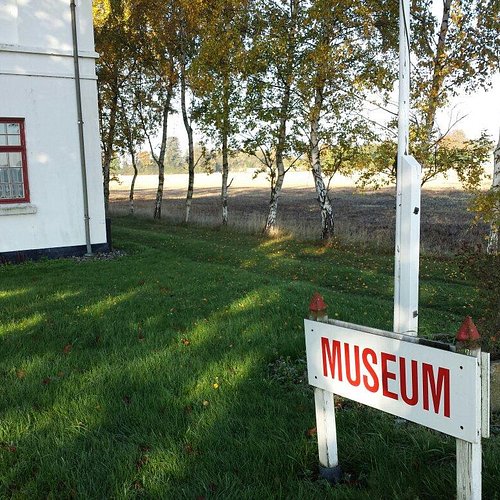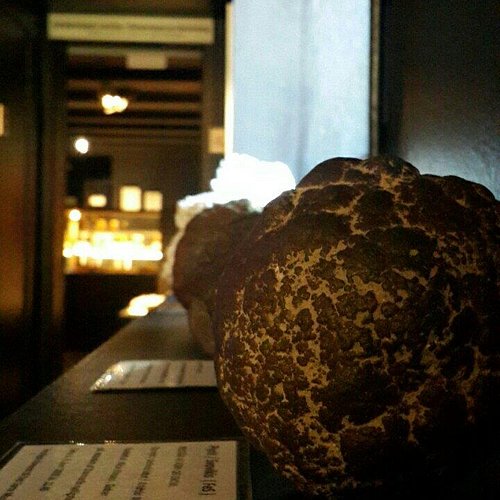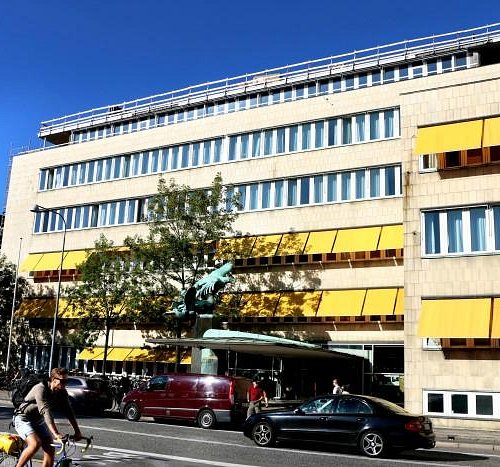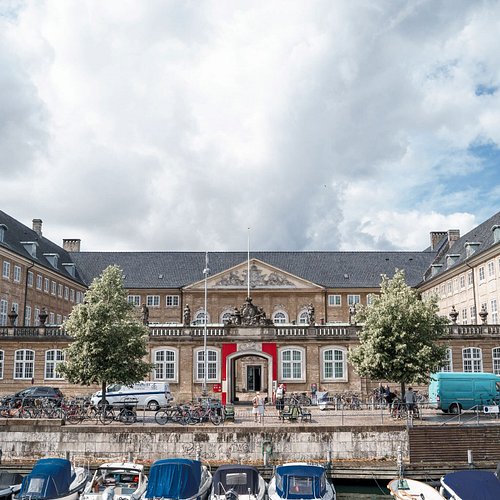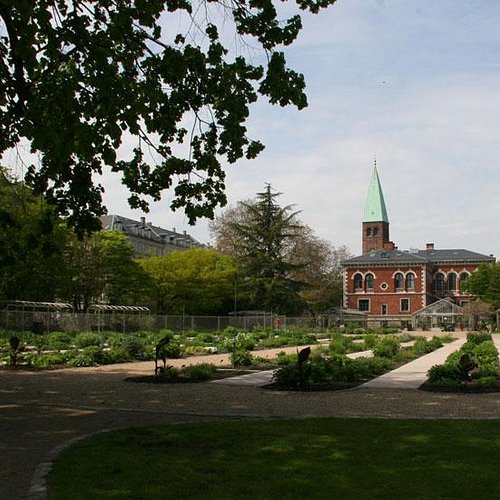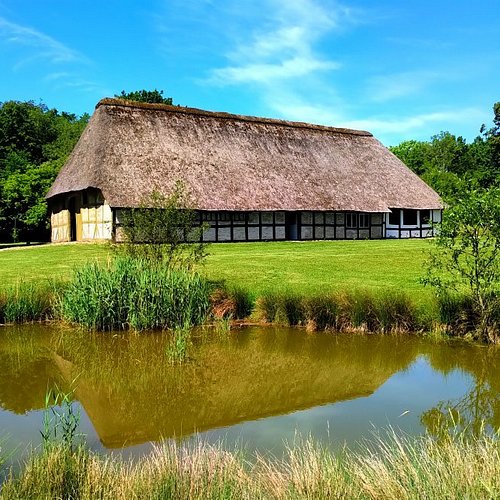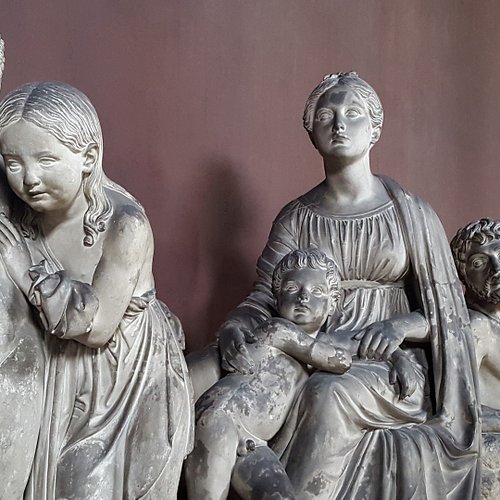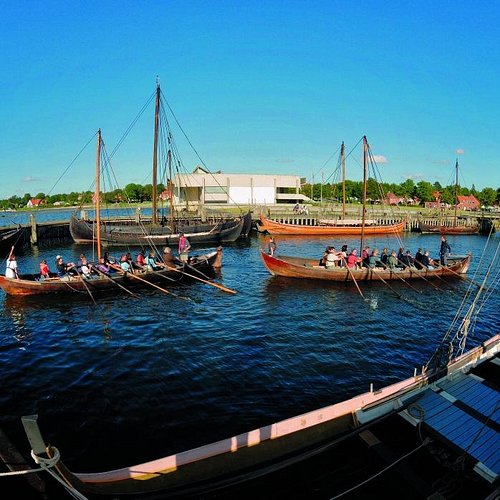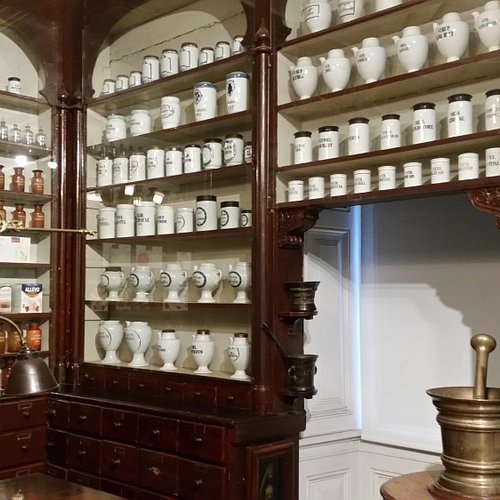The 10 Best Specialty Museums in Zealand, Zealand
Denmark's largest island is so much more than simply the home of the country's dynamic capital, Copenhagen. Zealand also offers a delightful array of holiday homes and villas, pleasing harbors and sandy beaches, fringed by forests where castles lurk. Major destinations include the UNESCO-designated, Dutch Renaissance-style Kronborg Castle in Helsingor and the Viking attractions, cathedral and music festival of Roskilde. To the south bobs a flotilla of beautiful and relatively untouched islands.
Restaurants in Zealand
1. Museum Polish Barrack
Overall Ratings
5.0 based on 1 reviews
2. Det Sorte Museum
3. The Danish Music Museum
Overall Ratings
5.0 based on 22 reviews
In September 2014, the Danish Music Museum reopened with its unique exhibition in new premises at Rosenorns alle 22, Frederiksberg C. The new premises are situated in the former "Broadcasting House", which also houses the Royal Danish Academy of Music. This is a unique "house of music" in which the museum's collections bring the living music of the practising musicians into a cultural historical context, and in which the living music supplies the museum's collections with a sounding dimension. The museum's refurbished exhibition is divided into two "routes" for the visitor - a route which deals with development in Denmark from the bronze lurs onwards, and a route which takes the Middle Ages as its starting point and continues through the various European periods, until both routes meet in globalization of the 20th century. A special part of the exhibition - The "Kunstkammer" - displays quite special, beautiful or rare objects from different periods. The rear part of the exhibition floor - The World - is reserved for temporary exhibitions, starting with an interesting exhibition about the Far East, featuring instruments from China, Japan and Korea. The new premises also house "Det Klingende Museum" - a new project for children and young people, which allows them to explore all kinds of musical instruments within three main categories: classical music, rhythmic music and traditional music.
Reviewed By wam525 - Baltimore, United States
If you have any interest in musical instruments, this is a terrific place to visit. One of the highlights of our visit to Copenhagen. it traces the different musical instruments humans have used throughout history. The admission includes an iPad with information in English, and even better, there are many minutes of excerpts of people playing the old instruments you can see. This is very well done, and it's easy to spend a few hours here. In October it was only open on weekends, so keep this in mind. Don't miss it. It's also especially good for children, as there is a room where they can try different instruments.
4. The National Museum of Denmark
Overall Ratings
4.5 based on 4,471 reviews
Danish history is brought to life at The National Museum of Denmark Meet the Danes of today and of the past. Go for a guided walk with a local insider who will elaborate on Danish welfare, the country’s free spirit and what “hygge” really means. And finally, hear from the Danes in the 9th Century; the Vikings who were feared and renowned all over Europe. See the remains of the people who lost their lives in the tribal wars of The Stone Age. The woman who survived a blow to the head with a stone axe and later covered her mutilated head with a hat. See the treasures that the Vikings brought with them from their travels to England and The Mediterranean. Or experience the axe that in 1772 severed the head of one of the main characters of Danish history’s most dramatic love affair. On your way out, grab a Danish souvenir from the museum’s gift shop - and if you get hungry, you can always eat typically Nordic dishes at the appraised restaurant Smor.
Reviewed By zuv - Bucharest, Romania
For me, the most interesting museum in Copenhagen. There are lots of exhibits You can find here everything about the history of the Danes, starting with prehistory, passing to the Vikings, the Middle Ages and modern times. Danish explorers, lifestyle over time, weapons, jewelry, household items, art, etc. There is a café in the central atrium. You need at least 3 hours to see it all. As a minus, I think it would be necessary a better marked route to follow through the museum, to know what you saw and what did not.
5. The Workers Museum
Overall Ratings
4.5 based on 221 reviews
Get up close and personal with the everyday life of Danish working class families in the historical assembly hall from 1879 in the centre of Copenhagen. Learn about struggles which ordinary workers have faces in unity through more than 150 years, Step out in the backyard where the laundry hangs on clothes lines, and let yourself be guided through small flats, steps staircases, outdoor latrines, the beautiful banquet hall and the old trade union office. Let the kids play in the old grocery shop in the Kid's museum with goods, scales and small change, Give them af job at the brewery, as a bicycle delivery boy or girl and let them expericence the hard life as working class children in the 1930s. Take a break in the authentic coffee bar from the 1950s and have traditional Danish 'smørrebrød' (open faced sandwiches) for lunch in the Cafe & Ølhalle - the basement restaurant.
Reviewed By LancasterTerrace - Copenhagen, Denmark
This is am amazing museum. I workers' history of Denmark which is a great history of the beginning of the workers' movement across Western Europe.
6. Botanical Garden
Overall Ratings
4.5 based on 2,329 reviews
The Botanical Garden is a part of the Natural History Museum of Denmark. The Botanical Garden holds the largest collections of living plants in Denmark. If you are interested in botany and gardening or are just looking for an idyllic escape from the hustle and bustle of the city, the garden is a great place to relax and find inspiration. Year round it is home to a variety of exhibitions and activities, for example the Palm House, the Butterfly House and guided tours. The Botanical Garden are open Tuesday through Sunday from 8:30 AM to 4 PM in the winter, and every day from 8:30 AM to 6 PM from May through September. Visiting the Botanical Garden is free, except for the Palm House where there is an entrance fee.
Reviewed By okeedoke
We visited the lovely gardens after our tour of Rosenborg Castle.The garden contains more than 13,000 species, arranged in different sections including: Danish plants (600 species), perennial plants (1,100 species), annual plants (1,100 species), rock gardens with plants from mountainous areas in Central and Southern Europe and Conifer Hill...which is planted with coniferous trees. One of the newest inclusions is a rhododendron garden and the butterfly pavilion. Higly recommend!
7. The Open Air Museum
Overall Ratings
4.5 based on 401 reviews
Experience the historic and atmospheric buildings from different parts of Denmark at The Open Air Museum. You can see impressive and atmospheric buildings, old breeds of domestic animals in the fields and attractive, historic gardens. Take a ride in the horse-drawn carriage and find inspiration in the museum shop. Bring along your family and a picnic basket and enjoy a day at the Open Air Museum.
8. Thorvaldsens Museum
Overall Ratings
4.5 based on 546 reviews
See sculptures created by sculptor Bertel Thorvaldsen, whose work can be found across Europe. Long corridors allow for natural light and echo the creative ambiance. The Museum opened on September 18, 1848. It is Denmark’s oldest and also most extraordinary museum building. Open Tuesday-Sunday, 10 a.m.–5 p.m.
Reviewed By birtel831 - Kongens Lyngby, Denmark
Oldest public museum in Denmark: devoted to the neoclassicistic artist Bertel Thorvaldsen who donated his life’s works and collection to his native city, this museum from 1848 is the oldest museum in the world devoted to one artist and sublime in having different floors and ceilings to set off the marble statues or statues in plaster-of- paris.from outside it is a festive building with its friese showing Thorvaldsen’s homecoming in 1838.
9. Viking Ship Museum
Overall Ratings
4.5 based on 1,858 reviews
Warships await you at the Viking Ship Museum. Don't worry, they won't open fire. This museum is dedicated to education about boat building, archaeology and Viking life. It's a favorite among kids, and visitors of all ages can take to the water in traditional vessels. Open 10 a.m.-4 p.m. seven days a week, until 5 p.m. in summer months.
Reviewed By GoSimplified - Denver, United States
Don’t miss this amazing educational, informational and interactive opportunity to learn everything about Vikings. Ships, ropes, sails, costumes, tools, a boat ride out into the Sea, build your own miniature ship, watch blacksmiths work metal with bellows and anvil. Five authentic ships excavated and saved from the channel. Very nice gift shop. Museum exhibitions and films on the recovery of the five ancient ships. Great for adults, kids, families.
10. Medical Museion
Overall Ratings
4.5 based on 173 reviews
Exploring, understanding and treating the body has always been the job of medicine. At Medical Museion we explore what medicine means for our lives – in the past, present and future. Medical Museion is a museum for everyone who has a body and is curious about how it is has been understood and treated, from Antiquity to Genetics. Exhibitions at Medical Museion draw on the museum’s vast collection of historical objects. However, you can also encounter cutting edge medical research and practice. The exhibitions take you on a journey through the world of medicine from historical understandings of our bodies to current challenges in public health such as obesity. The Body Collected (opened in 2015) lays out how medicine has collected the human body for research and teaching throughout history, running up to the present day. Guests are invited to join one of our guided tours (included in admission price) for a general introduction to the exhibitions, however, we also encourage you to explore the museum on your own. Do make sure to check out the museum’s calendar for special events, including Evening Consultations. Medical Museion is a university museum where scholars do research in science communication and medical humanities, often based in or contributing to the exhibitions. Many of the museum’s activities are experimental - both in format and content. Examples include the open collection room for Psychiatry, and the contemporary research focus of Room for Ageing. The Royal Surgical Academy Medical Museion is based in the buildings of the old Surgical Academy from 1787. Traces of the past are still evident in the exhibition rooms. At the centre of the museum is the anatomical theatre in which generations of medical student witnessed dissections of corpses and learned about anatomy. The anatomical theatre is still used for public lectures, doctoral defences and teaching. Medical Museion also hosts concerts, performance art and theatre in its historical surroundings, and arranges public events based on the exhibitions.
Reviewed By Miea_H - Bodo, Norway
The medical Museion is a combined museum and a research unit with a lot of history. The building has a really special atmosphere, with its vast collection of medical artefacts and materials, as well as the well kept rooms. Stepping in to the building was a treat on its own. It was definitely worth the visit.

